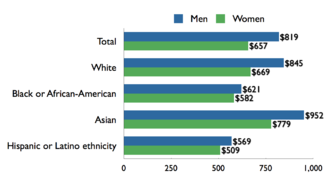ATD Blog
The Journey to Gender Equity
Wed Nov 06 2013

With evidence of how women have advanced within the United States and around the world, the quest for gender equality still proves elusive in many ways.
Signs of progress
Women are now almost equal to men in college graduation rates in the United States; in 1980, only 13.6 percent of women graduated, compared with over one-fifth of men.
The United States has nominated a woman to lead the Federal Reserve for the first time.
Recent research from Catalyst and McKinsey & Co. has demonstrated the positive bottom line impact of having women in senior positions and on corporate boards.
There are 29 female leaders in countries or self-ruling territories. Female presidents lead in countries such as Argentina, Brazil, and Costa Rica. Fourteen countries count female Prime Ministers, a group that includes Bangladesh, Denmark, and Germany (the 4th largest economy in the world, by GDP). Having a female president is a milestone the United States has yet to achieve.
A mixed picture
There is also strong evidence to suggest that gender equality is not yet a reality. The United States ranks 23rd out of 136 countries in terms of the status of women, according the Annual Gender Gap Report.
In the European Union, there is a big push to increase the representation of women on corporate boards—and the U.S. is significantly behind the Nordic countries, with less than 2 percent having joined corporate boards in America since 2009.
At the other end of the socioeconomic spectrum, 41 percent of U.S. women are poor or at the edge of poverty, according to Wider Opportunities for Women, based on U.S. Census data. Worldwide, women represent 70 percent of the poor, but they are half of the global population, according the Global Poverty Project, and overall earn only 10 percent of the world’s income.
And women continue to trail other diverse groups in terms of wages, as the chart below illustrates:
**Average Weekly Salary by Race, Gender, Ethnicity:
Highlights of Women’s Earnings Report, June 2010**

Source: U.S. Bureau of Labor Statistics
Reasons for continuing inequity
Systemic issues are causing some of the inequities. Other factors include women “off-ramping” to attend to family responsibilities and less access to influential networks that are largely dominated by men.
Hidden biases are another culprit. A dramatic example of sex-based hiring in major symphony orchestras revealed that when preliminary auditions were blind, with musicians hidden behind a screen, the likelihood that a woman would advance to the next round of auditions increased by 50 percent. But when such auditions were not blind, only 19.3 percent of women advanced.
Other research studies of corporate hiring reveal a similar pattern. For instance, when the candidate is male, he is much more likely to be hired when compared with a woman with the exact same résumé and credentials.
The recent best-selling book by Sheryl Sandberg, COO of Facebook, Lean In: Women, Work and the Will to Lead, suggests that women need to change their behaviors to be heard and promoted. Sandberg has sparked an important discussion about the degree to which gender inequality is due to women’s actions, confidence, commitment, and will to succeed, versus how much can be attributed to policies, overt or hidden discrimination, lack of access to sponsors, and other opportunities.
Benefits
Having more equal treatment for women and tapping into their ideas is an imperative for future growth. There is abundant evidence that having women on teams promotes collaboration and better problem solving.
Moreover, as women increasingly become economic decision makers on the consumer side, as well as in a business-to-business context, they bring greater understanding of the drivers for this growing customer base.
Failure to achieve full gender equity is a significant drag on economic, social, and human progress and limits everyone’s ability to realize their full potential.
What best practices have you seen to promote gender equality?
Learn more about D&I best practices by reading the full blog series.
